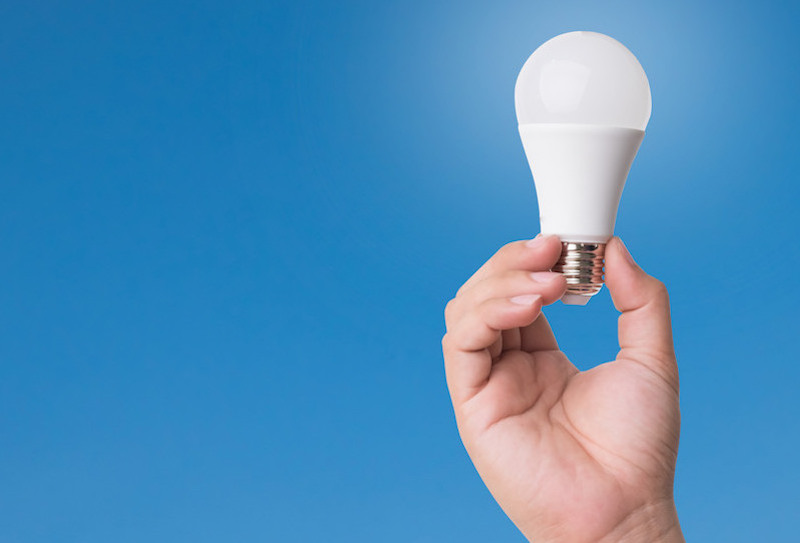Now that Daylight Savings Time is over, it’s time to replace incandescent light bulbs with energy-efficient lighting and “tag” your friends on social media to do the same.
The Natural Resources Defense Council (NRDC) is launching an #LEDchallenge on social media to urge everyone to switch out at least one inefficient bulb for an LED. Then “tag” a friend to do the same. If every U.S. household replaced just one old bulb with an LED, the NRDC reports that our nation’s electric bill would be cut by more than $5 billion, and we’d avoid 2-million metric tons of carbon dioxide pollution in just 10 years. The savings opportunity is huge because the average U.S. household has about 40 lighting sockets, and more than 2-billion sockets nationwide still contain inefficient bulbs.
Light-emitting diodes (LEDs) produce light when an electrical current is passed through semiconductor material (diode). How much more efficient are LEDs? Currently, CFL bulbs have a life span that is only a third of LED bulbs. According to the U.S. Department of Energy (DOE), switching to LED lighting in the United States over the next two decades could save $250 billion in energy costs and reduce the electricity consumption for lighting by nearly one half.
Here are some LED facts:
- Lifespan of 20,000 to 50,000 hours — 25 times longer than incandescent lighting
- Reduces lighting costs up to 85 percent over incandescent lighting
- Considered the most environmentally-friendly bulb, including manufacturing and performance
- Higher upfront cost
- Per bulb, save $100 to $400 in electrical costs (Consumer Reports)
- Instant brightness with no warm-up period
- Life span is not affected by turning them on and off frequently
- Generally, emit light in only specific directions
- ENERGY STAR certified LED bulbs are required to distribute light evenly to be comparable with standard light bulbs
- Sensitive to heat, so some not recommended for fully-enclosed fixtures
To learn more, visit the NRDC’s Center for Energy Efficiency Standards blog.
Photo: LED Light Club / CC




